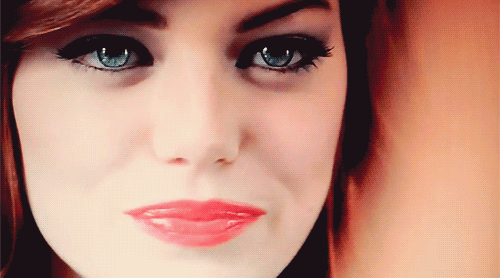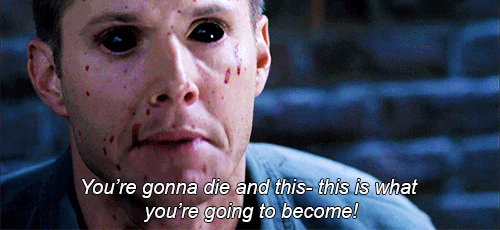 |
| Advertisement |
For the first time the Food and Drug Administration has approved contact lenses that darken in response to sunlight. Here’s what you need to know.
Would you ever try contact lenses that automatically get darker when exposed to sunlight?

Giphy / Via giphy.com
The Food and Drug Administration just approved contact lenses that contain a "photochromic additive," which gets slightly darker when you are out in the sun, and then becomes clear again.
The contact lenses are similar to "transitions" glasses that get darker in strong sunlight but fade back to clear when inside. Those type of glasses, which rely on photochromic technology, have been around since the1990s.
“This contact lens is the first of its kind to incorporate the same technology that is used in eyeglasses that automatically darken in the sun,” said Malvina Eydelman, director of the Division of Ophthalmic, and Ear, Nose and Throat Devices at the FDA's Center for Devices and Radiological Health, in a statement.
The approval was based in part on a clinical trial of 24 people, which showed that the contacts didn't interfere with driving either at night or during the day. "The results of the study demonstrated there was no evidence of concerns with either driving performance or vision while wearing the lenses," according to the FDA.
The company that makes them said that they definitely won't make you look like you are possessed by a demon.

The CW / Via giphy.com
"There’s not going to be any creepy alien eyes," said Donna Lorenson, a vice president in communications at Johnson & Johnson Vision in New Brunswick, NJ.
Johnson & Johnson makes the contact lenses, called the Acuvue Oasys Contact Lenses with Transitions Light Intelligent Technology. They are soft contacts made for daily wear up to 14 days. "We spent years figuring out how to do this," she told BuzzFeed News.
The company was unable to share any images of what the contact lenses actually look like on the human eye. But Lorenson said they did try to make sure they did not have a large impact on the eye's color.
“That’s who you are, we didn’t want to change that,” she said.

This is what the contacts actually look like.
Johnson & Johnson
Lorenson said that on brown eyes, the contact lenses should be almost imperceptible. If you have lighter colored eyes, however, you might notice a slight grey tint.
And although glasses can take some time to fade back to clear, that shouldn't happen with these contact lens, Lorenson said. “These should fade back pretty quickly," she said.
The lenses will be available in early 2019, according to the company, and the cost is not yet available. They shouldn't interfere with your ability to view blue-light emitting devices, like phones and computers.
"These contact lenses respond primarily to UV light and do not absorb substantial blue light in the non-activated (clear) state," said Lorenson. "In clinical studies, we have not received any feedback that the lenses interfere with viewing screens."
But it's also unclear if they can protect your eyes from ultraviolet light, so you'll still need to wear sunglasses with UV protection. UV rays can cause: cataracts, which is a clouding of the eye lens; macular degeneration, which is a loss of central vision that is the leading cause of blindness; and growths on the conjunctiva, which is the membrane that covers the surface of the eye and lines the eyelids.
"We have not yet studied whether they would have an impact on the onset and severity of cataracts or macular degeneration," Lorenson said. " As a reminder, we recommend patients continue to wear sunglasses for the highest possible protection from UV light."
The best way to protect the eye from UV radiation is to wear wraparound sunglasses that are polarized and have UV400 protection, said Dr. Ravi Goel, an ophthalmologist and clinical spokesperson for the American Academy of Ophthalmology. UV400 glasses block both UVA and UVB radiation, or about 99.9% of UV rays.
Polarized sunglasses block the reflected light from flat surfaces (like water), which can be too intense for the eyes. They "block vertical rays of light and only allow horizontal rays of light to come in, that is what enhances the quality of vision with sunglasses," Goel told BuzzFeed News. "You’re not going to get this with contact lenses, whether or not they have transitions."
"Me personally, I would never go near the water on a bright day without polarized sunglasses in terms of eye safety and eye quality," Goel said.

Miami Vice / Via giphy.com
"I think it’s an interesting technology to try, I think much of it would depend on patient comfort when they are using these contact lenses," he told BuzzFeed News.
"The proof is going to be in the pudding in terms of whether or not this helps with lethargy, eye strain, and headaches, which are typical symptoms that patients might have if they are in bright light and they are not protected with sunglasses or transitions," said Goel.
Many more people will need to try the contacts in real life (as opposed to a clinical trial) to see how well they work, he said.
"I think it will be a welcome technology," he said. "I look forward to seeing how it behaves in my patients."


0 comments: